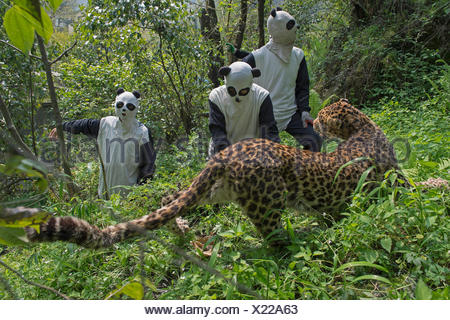

The fact why this finding regarding pandas has taken so long is due to their scarcity in the wild and our habit of only seeing them up close in zoo settings. “We observed that disruptive coloring, well-known phenomena in insects in which an animal’s colour breaks up its shape, is working in a mammal.” “This has never been fully proven previously.” Not only did their approach indicate that the pandas camouflaged, with black spots like tree trunks and shadows and white patches resembling vegetation and snow, but it also revealed that it was a sort of camouflage commonly associated with insects. “Now biologists can model how other species actually view the world by knowing about the functional anatomy of their visual systems.” “We know the spectral sensitivities of all these species – humans are trichromats, but cats and dogs are dichromats,” corresponding author Professor Tim Caro told IFLScience. They did not just want to examine how pandas seemed to humans they also wanted to see how pandas appeared to their natural predators, which included felids and dogs. The scientists evaluated a portfolio of rare images of giant pandas in the wild to see how they contrasted in their natural surroundings to determine whether the panda’s black and white coat actually did assist it to conceal. Orcas, skunks, and zebras are just a few of the startling monochromatic outliers to the trends, which include orcas, skunks, and zebras. Panda’s Coat Is Surprisingly Effective Camouflage through Predators’ EyesĬrypsis is a term used to describe creatures who blend in so well with their surroundings that they are nearly undetectable.


With the species on the verge of extinction, it has been tough to perceive pandas in this light in the past, but this year it reported that they are no longer endangered in the wild. Together, the group devised a unique way to analyzing images of giant pandas (Ailuropoda melanoleuca) to observe how (or whether) their striking black-and-white coats merged into their surroundings. Researchers from the University of Bristol, the Chinese Academy of Sciences, and the University of Jyväskylä collaborated on the study, which was published in the journal Scientific Reports. Researchers were able to establish that while pandas stand out in captivity, they are extremely difficult to recognize in the wild by looking at photographs of animals through the eyes of humans, felids, and dogs. This type of vision model was recently used to learn how sharks detect humans (like seals, FYI) and are now used to test the notion that a panda’s obviously prominent coat really serves as camouflage in the environment. Understanding diverse species’ spectrum sensitivities have allowed scientists to achieve something cool: we can now experience the world through the eyes of different creatures.


 0 kommentar(er)
0 kommentar(er)
